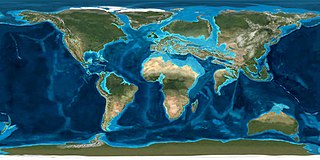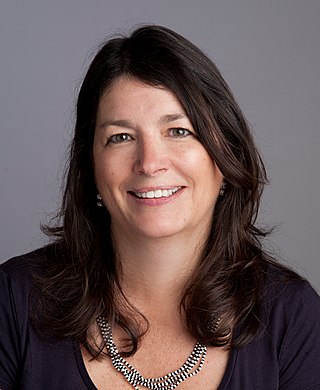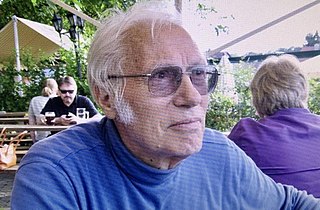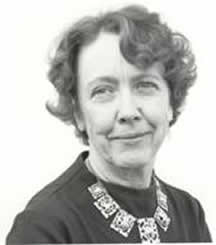Related Research Articles

The Eocene Epoch is a geological epoch that lasted from about 56 to 33.9 million years ago (Ma). It is the second epoch of the Paleogene Period in the modern Cenozoic Era. The name Eocene comes from the Ancient Greek ἠώς and καινός and refers to the "dawn" of modern ('new') fauna that appeared during the epoch.

The Paleocene–Eocene thermal maximum (PETM), alternatively "Eocene thermal maximum 1" (ETM1), and formerly known as the "Initial Eocene" or "Late Paleocene thermal maximum", was a time period with a more than 5–8 °C global average temperature rise across the event. This climate event occurred at the time boundary of the Paleocene and Eocene geological epochs. The exact age and duration of the event is uncertain but it is estimated to have occurred around 55.5 million years ago (Ma).

Foraminifera are single-celled organisms, members of a phylum or class of Cercozoan protists characterized by streaming granular ectoplasm for catching food and other uses; and commonly an external shell of diverse forms and materials. Tests of chitin are believed to be the most primitive type. Most foraminifera are marine, the majority of which live on or within the seafloor sediment, while a smaller number float in the water column at various depths, which belong to the suborder Globigerinina. Fewer are known from freshwater or brackish conditions, and some very few (nonaquatic) soil species have been identified through molecular analysis of small subunit ribosomal DNA.
Lukas Hottinger was a paleontologist, biologist and geologist. Hottinger collaborated with the Natural History Museum of Basel (Switzerland).
David A. Hodell is a British–American geologist and paleoclimatologist. He currently holds the position of Woodwardian Professor of Geology in the Department of Earth Sciences at the University of Cambridge, where he is also a fellow of Clare College. He is a dual citizen of the United Kingdom and the United States. Previously, he taught at the University of Florida from 1986–2008, earning the rank of full professor in geological sciences. Hodell was also the director of the Stable Isotope Laboratory from 1996–2008. Hodell earned his Ph.D. in 1986 in oceanography from the University of Rhode Island after earning his bachelor of arts in 1980 in geology from the University of Vermont.
Gerald R. Dickens is Professor of Earth Science at Trinity College Dublin, and is a researcher into the history of the world’s oceans, with respect to the changing patterns of their geology, chemistry and biology.
Paleoceanography and Paleoclimatology is a peer-reviewed scientific journal published by the American Geophysical Union. It publishes original research articles dealing with all aspects of understanding and reconstructing Earth's past climate and environments from the Precambrian to modern analogs. Until the first of January 2018 the name of the journal was Paleoceanography.

The Cretaceous Thermal Maximum (CTM), also known as Cretaceous Thermal Optimum, was a period of climatic warming that reached its peak approximately 90 million years ago (90 Ma) during the Turonian age of the Late Cretaceous epoch. The CTM is notable for its dramatic increase in global temperatures characterized by high carbon dioxide levels.
Lorraine Lisiecki is an American paleoclimatologist. She is a professor in the Department of Earth Sciences at the University of California, Santa Barbara. She has proposed a new analysis of the 100,000-year problem in the Milankovitch theory of climate change. She also created the analytical software behind the LR04, a "standard representation of the climate history of the last five million years".

Maureen E. "Mo" Raymo is an American paleoclimatologist and marine geologist. She is the Co-Founding Dean of the Columbia Climate School, Director of the Lamont–Doherty Earth Observatory of Columbia University, the G. Unger Vetlesen Professor of Earth & Environmental Sciences, and Director of the Lamont–Doherty Core Repository at the Lamont–Doherty Earth Observatory of Columbia University. She is the first female climate scientist and first female scientist to head the institution.

Wolfgang "Wolf" Helmut Berger was a German-American oceanographer, geologist, micropaleontologist and emeritus professor at the Scripps Institution of Oceanography, University of California, San Diego. His research interests comprise "micropaleontology, marine sedimentation, ocean productivity, carbon cycle, ocean history, climate history, and history of oceanography."

Helen Niña Tappan Loeblich was an American micropaleontologist who was a professor of geology at the University of California, Los Angeles, a United States Geological Survey (USGS) biostratigrapher, and a scientific illustrator whose micropaleontology specialty was research on Cretaceous foraminifera.
Alfred R. Loeblich Jr (1914–1994) was an American micropaleontologist. He was married to Helen Niña Tappan Loeblich and the two co-authored a number of important works on the Foraminifera and related organisms.

James Zachos is an American paleoclimatologist, oceanographer, and marine scientist. He is currently a professor and chair of the Department of Earth and Planetary sciences at University of California, Santa Cruz where he was elected to the National Academy of Sciences in 2017. His research includes biological, chemical, and climatic evolution of late Cretaceous and Cenozoic oceans, and how past climatic conditions help predict the consequences of anthropogenic carbon emissions on future climate change.
Rosalind Emily Majors Rickaby is a professor of biogeochemistry at the Department of Earth Sciences, University of Oxford and a Professorial Fellow at University College, Oxford. She is an Emeritus Fellow of Wolfson College, Oxford.
Bruce William Hayward is a New Zealand geologist, marine ecologist, and author. He is known as a leading expert on living and fossil foraminifera.
Margaret (Peggy) Delaney is marine geochemist known for her research on trace elements to examine changes in ocean chemistry over time.

Felix M. Gradstein is a Dutch-Canadian academic and a pioneer in quantitative stratigraphy and geologic time scale. At the University of Utrecht, he studied paleontology and stratigraphy, obtaining his Ph.D. taking a novel biometrical approach in micropaleontology, under the supervision of Professor CW Drooger. In 1976, after working two years for an oil company in Calgary, Canada, he joined the Geological Survey of Canada in its eastern division at the Bedford Institute of Oceanography in Nova Scotia. During his research there, he was instrumental in developing a novel quantitative method for the analysis of stratigraphic events. In 1992 Felix moved to Norway where he currently has an office at the University of Oslo and is Visiting Research Fellow at, University of Portsmouth, UK. From 1985 - 1989, he was chairman of International Geoscience Project (IGCP) 181 on Quantitative Stratigraphy. From 2000 to 2008 he was chair of the International Commission on Stratigraphy (ICS) and in 2010 was instrumental in founding the Geologic Time Scale Foundation. For his fundamental work concerning the Geologic Time Scale, geochronology in general, quantitative stratigraphy, and micropaleontology, the European Geosciences Union awarded him in 2010 the Jean Baptiste Lamarck Medal. Prof. Gradstein, a world-renowned stratigrapher discussed debates over the Geologic Time Scale with the Anthropocene working Group.
A hyperthermal event corresponds to a sudden warming of the planet on a geologic time scale.
Frances Lawrance Parker was an American geologist and micropaleontologist. She is credited for writing, co-writing, and publishing many academic books and articles with a focus of paleoceanography and micropaleontology. She has been awarded for her extensive contribution to the modern-day knowledge of benthic and planktonic foraminifera.
References
- ↑ Digitaal Album Promotorum Archived 2018-03-15 at the Wayback Machine at Utrecht University.
- ↑ "Career Profile, Ellen Thomas, Micropaleontologist". awg.org.
- ↑ "Development of Cenozoic deep-sea benthic foraminiferal faunas in Antarctic waters" (PDF). Geological Society, London, Special Publications.
- 1 2 "Ellen Thomas: 2012 Maurice Ewing Medal Winner". agu.org.
- ↑ "Editorial Board". agupubs.onlinelibrary.wiley.com/. doi:10.1002/(ISSN)1944-9186.
- ↑ Allen, Summer (December 12, 2014). "5 Things About Me: Micropaleontologist/Paleoceanographer Ellen Thomas". aaas.org.
- ↑ Brady Medal 2016
- ↑ https://www.eurekalert.org/news-releases/976295